After-Hours Tour of the Fraunces Tavern Museum: "Path to Liberty"
Explore a new exhibit inside the oldest building in Manhattan, a witness to history throughout the Revolutionary War Era!


Not surprisingly, Weimar is a tourist destination. Small and walkable, with history on every corner. Home of the German National Theatre and some 20 other landmarks and museums, it is the town of Goethe, Schiller, Ginko biloba and the grande dame Duchess Anna Amalia’s library (so impressive only 290 persons may visit per day and those spots are filled months in advance). It was once the seat of the celebrated Weimar Republic, later claimed as a rallying location for the Third Reich, and is now a UNESCO World Heritage Site. It is also the birthplace of the Bauhaus movement, Germany’s most important contribution to international art and modern culture in the 20th Century.
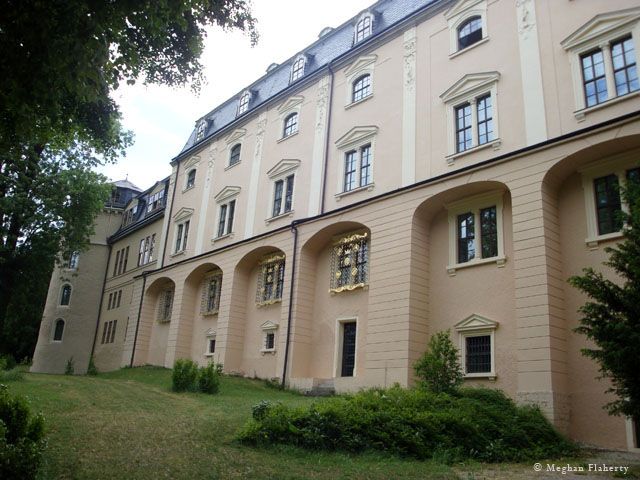 Behind the Anna Amalia Ducal Library (Weimar, Germany)
Behind the Anna Amalia Ducal Library (Weimar, Germany)
Bauhaus was founded in Weimar in 1919 when Walter Gropius invited an internationally renowned faculty to bridge the gulf between art and technology in the wake of World War I. Although the movement would only reach its prime in Dessau in the late 20s, then Berlin in the early 30s, Weimar was the cradle for this infant avant-garde. The school admitted anyone, regardless of social status, high school graduation, even sex, to study with the masters. (An excellent monograph was published to coincide with the MoMA’s Bauhaus exhibition in 1999, addressing the all but forgotten Weimar women, who are represented as an afterthought in the Weimar museum. Make sure to Google Alma Siedhoff-Buscher.)
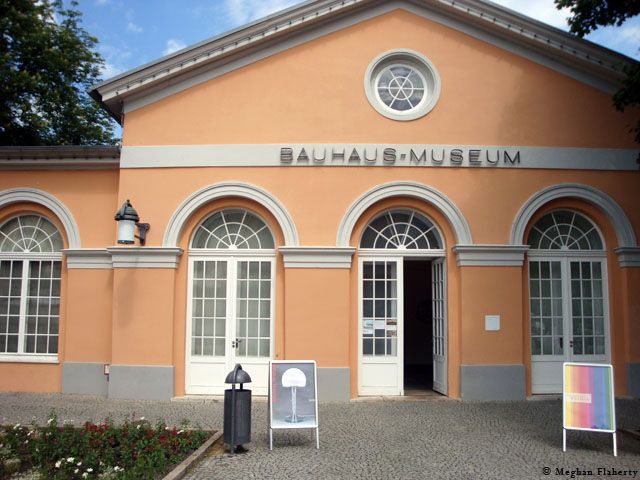 Main entrance to the Bauhaus Museum in Weimar
Main entrance to the Bauhaus Museum in Weimar
I visited on a Tuesday in late May, when universities were still in session and blossoms were still on the trees, and had the place almost to myself. Currently housed in a coral-colored former coach house on the Theaterplatz, just across from a formidable bronze of Goethe and Schiller chumming it up in the afternoon sun, the museum is small-home to but a fraction of its massive collection of Bauhaus documents and artifacts.
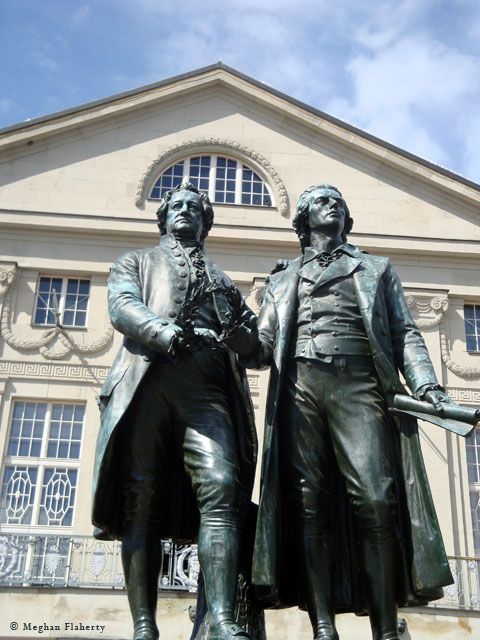 Goethe and Schiller in front of the Deutsche Nationaltheater and Staatskapelle (Weimar Theaterplatz)
Goethe and Schiller in front of the Deutsche Nationaltheater and Staatskapelle (Weimar Theaterplatz)
The handheld guided tour device narrates (in lush British tones) all things Bauhaus-from the evolution of the signet design by student contest, to the ideological and artistic differences of the members. It describes the Bauhaus mission to reunite art and craft, to eliminate the distinction between form and function in the service of producing aesthetically useful objects to both beautify and simplify everyday life for everyday people.
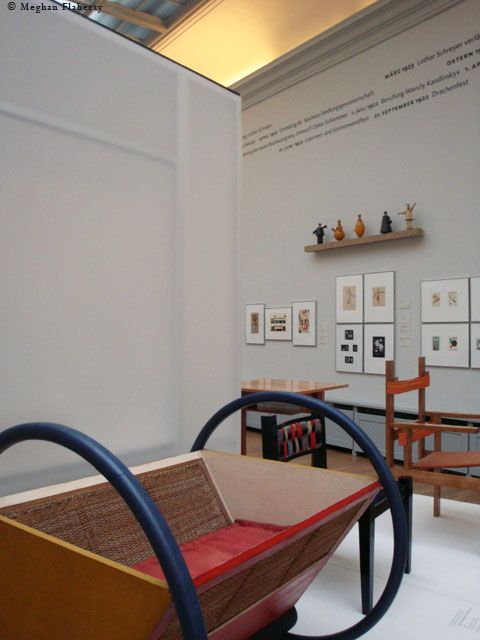 Inside the Bauhaus Museum: Cradle designed by Peter Keler, 1922, with signature Kandinsky shapes and colors.
Inside the Bauhaus Museum: Cradle designed by Peter Keler, 1922, with signature Kandinsky shapes and colors.
I lingered at every headset icon (particularly the one next to the unassuming Paul Klee oil painting, Wasserpark im Herbst and the jagged Gelmeroda XI by Lyonel Feininger, rescued from Nazi confiscation) and finished the tour in a little over an hour. Particularly delightful is the bright and tiny Kandinsky study, just shapes on paper, but stunning all the same. There is also a film, however-sadly-it’s in Deutsch. The lobby, dominated by Johannes Itten’s colorful Turm des Feuers, conceals a stylish gift shop offering prints, postcards and art books, not to mention souvenir trinkets and fabulously well-designed hats.
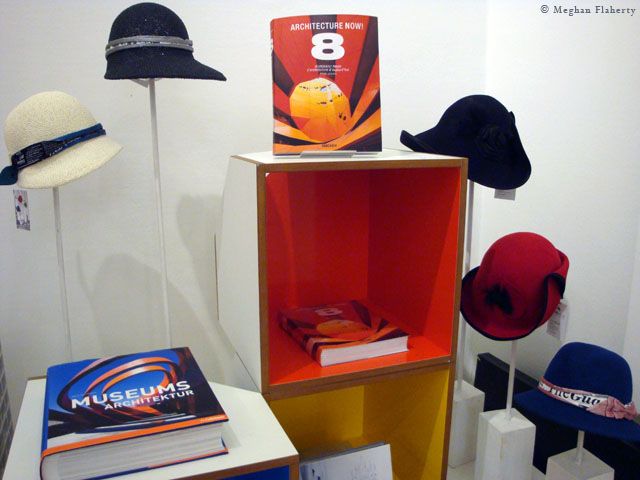 “Bauhats” at the Weimar Bauhaus Museum Gift Shop
“Bauhats” at the Weimar Bauhaus Museum Gift Shop
Plans are under way to move the museum to a more auspicious location in the future, which will accommodate the collection in its entirety. But Bauhaus isn’t all about artifacts (chairs, lamps, puppets, children’s toys and aesthetically-satisfying teapots). It is ultimately about architecture. Gropius’s 1919 Manifesto states that “the ultimate aim of all artistic activity is a building!” The Bauhaus building-of-the-future would combine “everything in a single form-architecture, sculpture and painting-” and would, one day, “rise towards the heavens from the hands of a million workers as the crystalline symbol of a new and coming faith.” Most of this architectural innovation took place once the Bauhaus epicenter moved on to Dessau and Berlin (and of course, in its resulting spread across the world), but one project was carried to completion-and still stands in Weimar, the Haus Am Horn.
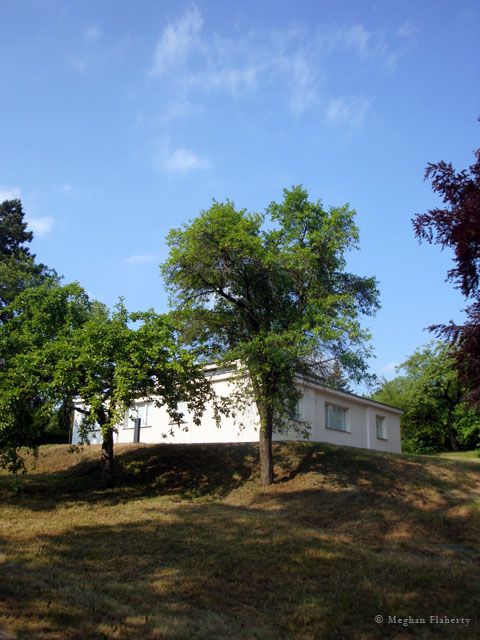 The Am Horn Haus in Weimar
The Am Horn Haus in Weimar
A schlep through the lovely Park an der Ilm (worth it for the sprawling waist-deep meadows and enormous, stately trees) revealed that the house is only open certain days. But, rest assured, the climb rewards you with a Biergarten for an early afternoon pick-me-up. The house itself sits (almost comically) next to a more typical ThàÆ’ ¼ringian mansion, but a walk around the wire fence reveals its perfect placement: squarely on a rise, just beside a towering red maple.
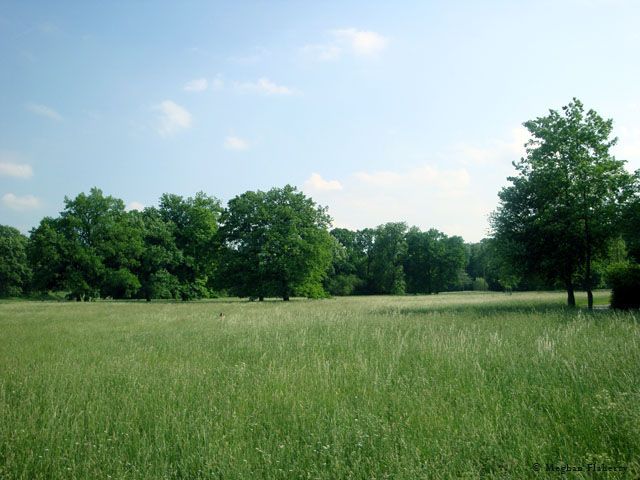 One of many meadows in the Park an der Ilm in Weimar, en route to the Am Horn house
One of many meadows in the Park an der Ilm in Weimar, en route to the Am Horn house
Once you’ve whet your palate with a little Bauhaus history, you’ll swear you start to see it everywhere-in the bookshops and the balconies of Weimar, incandescent in the early evening light.
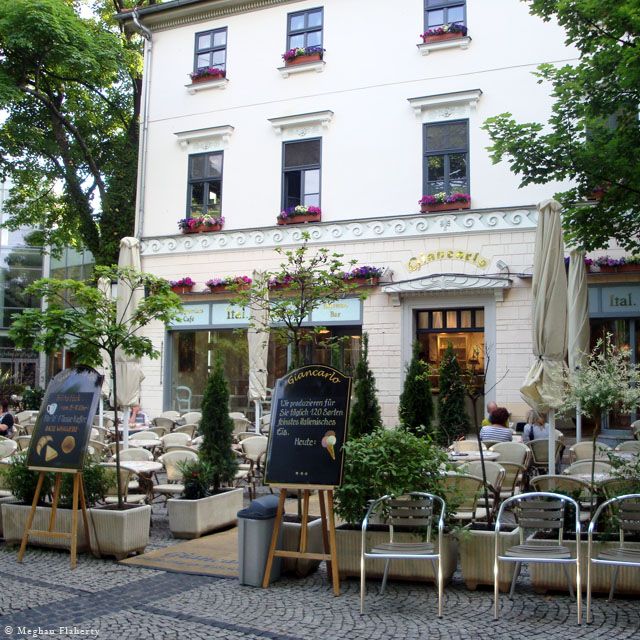 The Giancarlo Eiscafe and Pasticceria on SchillerstraàÆ’à… ¸e
The Giancarlo Eiscafe and Pasticceria on SchillerstraàÆ’à… ¸e
The rest of your evening is all yours to explore. Stop by the Giancarlo artisan eiscafé for one of over 100 flavors of artisanal ice cream and homemade kuchen, but don’t spoil your appetite for dinner at Anno 1900, a charming ThàÆ’ ¼ringian bistro just off the central Goetheplatz.
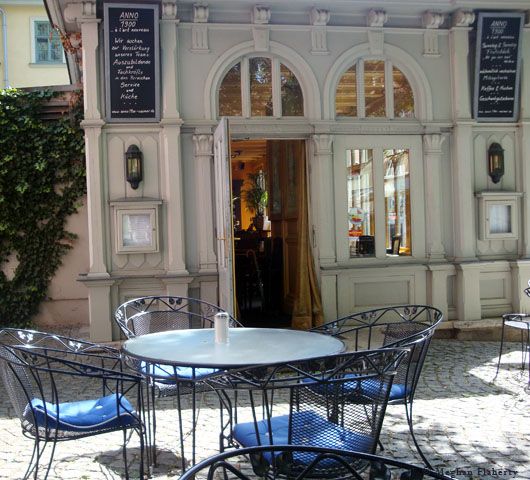 Cafe tables outside the Anno | 1900 restaurant
Cafe tables outside the Anno | 1900 restaurant
And remember, in Weimar, a platz by any other name is still a Goethe platz.
Theaterplatz 3
99423 Weimar
Germany
+49 3643/545400
Get in touch with the author @msmeghanbean.
Subscribe to our newsletter